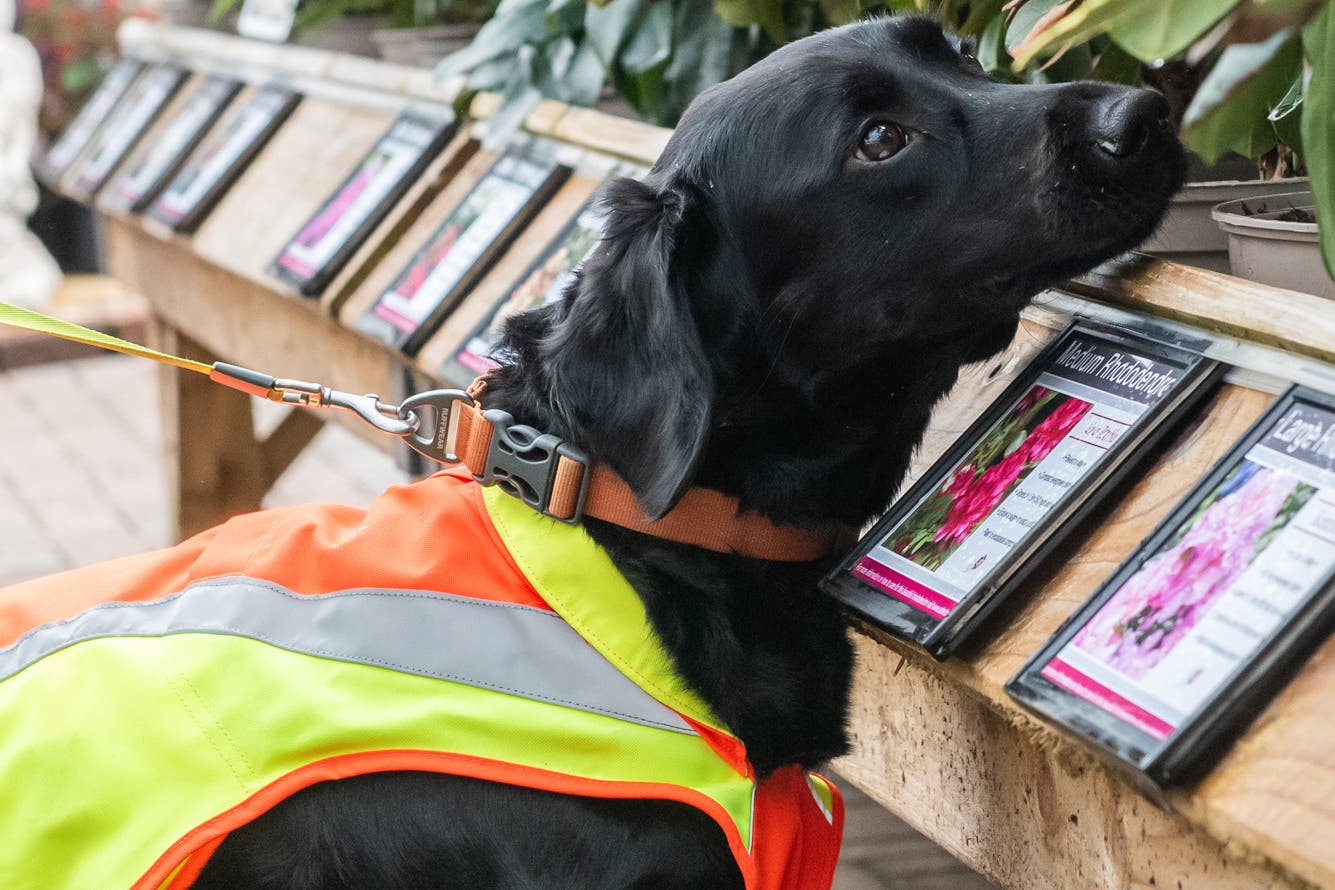Sniffer dog trained to detect tree disease in ‘groundbreaking’ project
Experts trained Ivor, a six-year-old cocker spaniel Labrador cross, to identify the highly destructive pathogen phytophthora ramorum.

Your support helps us to tell the story
From reproductive rights to climate change to Big Tech, The Independent is on the ground when the story is developing. Whether it's investigating the financials of Elon Musk's pro-Trump PAC or producing our latest documentary, 'The A Word', which shines a light on the American women fighting for reproductive rights, we know how important it is to parse out the facts from the messaging.
At such a critical moment in US history, we need reporters on the ground. Your donation allows us to keep sending journalists to speak to both sides of the story.
The Independent is trusted by Americans across the entire political spectrum. And unlike many other quality news outlets, we choose not to lock Americans out of our reporting and analysis with paywalls. We believe quality journalism should be available to everyone, paid for by those who can afford it.
Your support makes all the difference.A sniffer dog has been successfully trained to detect a tree disease as part of a “groundbreaking” project to protect the UK’s woodlands.
Experts taught Ivor, a six-year-old cocker spaniel Labrador cross, to identify the highly destructive pathogen phytophthora ramorum.
Ivor was able to achieve an 89% successful first-time detection rate following trials led by the UK Government’s Forest Research organisation and Canine Assisted Pest Eradication.
The project marks the first time sniffer dogs have been used to detect phytophthora ramorum in the UK.
It also comes as the latest step in Government action to combat the growing threat of tree diseases and pests, driven by climate change and the increase in movements of goods and people in recent years.
Phytophthora ramorum can cause extensive damage and even death to more than 150 plant species, including significant mortality on larch, which are important timber trees.
Nicola Spence, the UK’s chief plant health officer, said: “This groundbreaking research using detection dogs to identify phytophthora ramorum, alongside other innovative approaches to tackle pests and diseases, will play a key role in maintaining biosecurity to meet the vision set out in our world-leading plant biosecurity strategy.”
“Climate change and globalisation are increasing the number and the diversity of pests and diseases our nation’s trees and plants are exposed to.
“These new threats can cause significant damage, economic losses and in many cases tree death.”
Dr Heather Dun, pathologist at Forest Research, said: “The results from the trials have been incredibly encouraging, with a first-time 89% detection rate highlighting the huge potential of dogs in our fight against pests and diseases.
“Biosecurity is incredibly important and detection dogs like Ivor are an exciting new method for helping to protect our trees.”
Canine Assisted Pest Eradication director Luke Jones said: “We believe that innovation drives progress.
“We’re passionate about discovering the potential of detection dogs, who are one of nature’s ‘super-computers’.”
Detection dogs have previously been used to tackle the outbreak of the Asian longhorn beetle pest in Paddock Wood, Kent, in 2012.
Ivor was trained using a variety of detection training techniques including initial scent recognition, Forestry Research said.
Following the success of the initial trials, Forest Research is now exploring the use of detection dogs to help combat other pests and diseases such as Ips typographus, also known as the eight-toothed spruce bark beetle, fulfilling commitments set out in the Government’s plant biosecurity strategy.